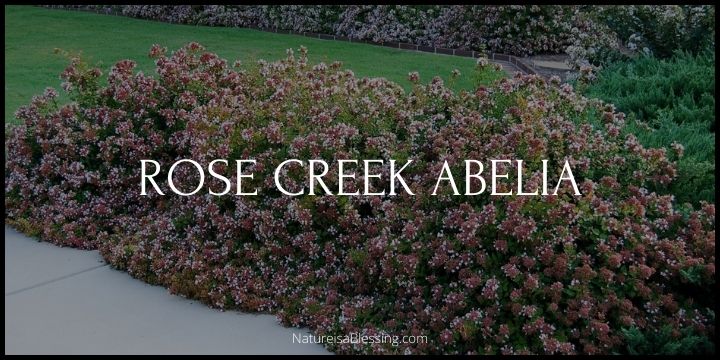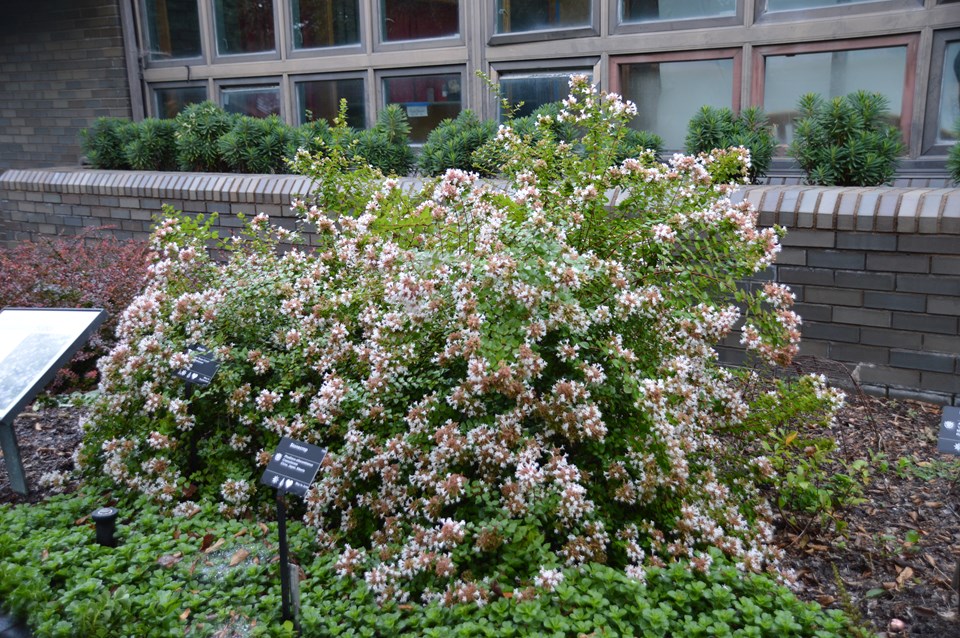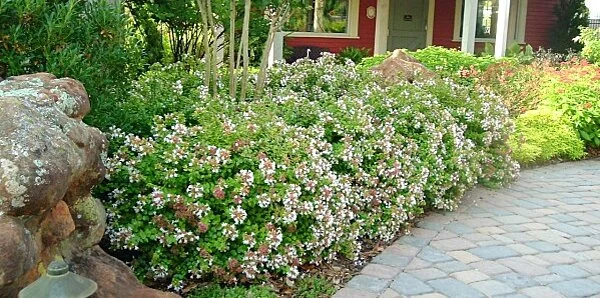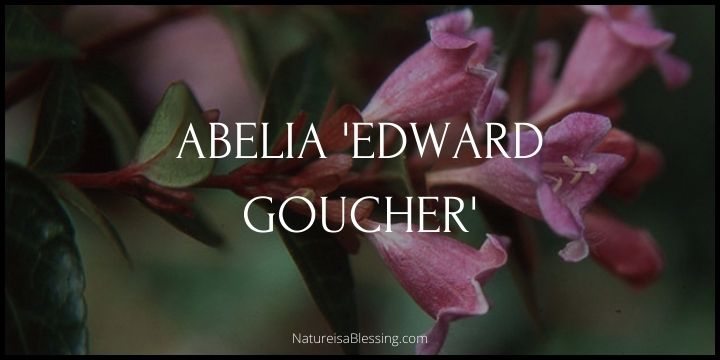Rose Creek Abelia: How to Plant, Grow, and Care

What is Rose Creek Abelia?
Rose Creek Abelia is a compact, semi-evergreen shrub that’s known for its beautiful flowers and broad, glossy leaves. This plant is native to China and Japan but has gained popularity globally due to its resilience and low maintenance requirements.
The Rose Creek Abelia is part of the Caprifoliaceae family and the Abelia genus. It typically grows to a height of 2-3 feet with a spread of 3-4 feet, forming a mounded shape. The plant offers a season of interest from summer to winter with its showy and fragrant flowers blooming from late spring until fall.
The flowers are tubular, white, and often tinged with pink, attracting butterflies and hummingbirds. In winter, the flowers give way to persistent, rosy sepals that add color to the garden landscape even in colder months.
This shrub thrives under full sun to part shade exposure and prefers well-drained soil. It has a moderate growth rate and is tolerant of various soil types, including clay, loam, and sand. It can also tolerate a range of soil pH from acidic to alkaline.
Rose Creek Abelia is known for its drought tolerance and resistance to deer. It can be used in various landscaping applications, including borders, mass planting, hedges, container gardening, and around decks, porches, and patios. Its USDA Plant Hardiness Zone ranges from 6 to 9.
Fast Facts About Rose Creek Abelia
| Characteristic | Detail |
|---|---|
| Country Or Region Of Origin | Native to China and Japan |
| Plant Type | Shrub |
| Family | Caprifoliaceae |
| Genus | Abelia |
| Sun Exposure | Full Sun to Part Shade |
| Season of Interest | Summer, Fall (Flowers), Winter (Persistent Sepals) |
| Water | Medium |
| Maintenance level | Low |
| Growth rate | Moderate |
| Height | 2-3 ft (0.6-0.9 m) |
| Spread | 3-4 ft (0.9-1.2 m) |
| Spacing | 3-4 ft (0.9-1.2 m) |
| Soil Type | Clay, Loam, Sand |
| Soil pH | Acidic, Neutral, Alkaline |
| Soil Drainage | Well-drained |
| Habit/Form | Compact, Mounded |
| Attracts | Butterflies, Hummingbirds |
| Characteristics | Showy Flowers, Fragrant Flowers, Deer Resistant, Long Blooming, Repeat Flowering, Evergreen |
| Tolerance | Deer, Drought, Heat |
| Suggested Use | Borders, Container, Mass Planting, Hedges/Screening, Foundation Plantings, Around Decks, Porches, Patios |
| USDA Plant Hardiness Zone | 6-9 |

An In-depth Guide to Growing and Caring for Rose Creek Abelia (Abelia x grandiflora ‘Rose Creek’)
Ideal Conditions for Growth
- Soil: Rose Creek Abelia is adaptable and can tolerate different soil types, including clay, loam, and sand. However, it thrives best in well-drained soil. The pH of the soil can range from acidic to alkaline.
- Light: This plant prefers full sun to part shade. It requires at least 4-6 hours of direct sunlight daily for optimal growth and flower production.
- Temperature: Rose Creek Abelia is hardy and can withstand temperatures in USDA zones 6-9. It can tolerate heat and humidity but should be protected from harsh winter winds.
- Watering Needs: While this plant is drought-tolerant once established, it’s best to water it regularly, especially in the first few years. Ensure the soil is moist but not waterlogged to prevent root rot.
Planting Steps
- Select the Right Spot: Choose a location that gets ample sunlight and has well-draining soil.
- Prepare the Soil: Dig a hole twice as wide and just as deep as the root ball of your plant. If your soil is heavy clay, you can improve its drainage by adding some organic matter or compost.
- Plant: Remove the Rose Creek Abelia from its container and gently loosen the roots if they’re compacted. Place the plant in the hole, ensuring that the top of the root ball is level with the ground surface. Backfill the hole with soil, pressing firmly to remove any air pockets.
- Water: After planting, water thoroughly and apply a layer of mulch around the base of the plant to conserve moisture and suppress weeds.
Care and Maintenance
- Pruning: Rose Creek Abelia typically doesn’t require much pruning. However, you can prune it in late winter or early spring to maintain its size and shape. Remove any dead or damaged branches as soon as you notice them.
- Fertilizing: Feed the plant in early spring with a slow-release, balanced fertilizer to promote vigorous growth and abundant blooming.
- Pest Control: This plant is generally pest-resistant. However, if you notice any signs of pests, treat them promptly with an appropriate pesticide or organic solution.
Additional Tips
- While Rose Creek Abelia is deer-resistant, it’s still a good idea to protect young plants with a fence or netting until they’re established.
- During dry spells or intense summer heat, water the plants deeply and frequently.
- Rose Creek Abelia is great for borders, mass planting, hedges, or container gardening. It also attracts butterflies and hummingbirds, adding more life to your garden.
Growing Rose Creek Abelia is a rewarding experience due to its beautiful blooms and low maintenance requirements. With these tips, even beginners can successfully grow and care for this lovely shrub in their outdoor space.
Enjoy the process and the stunning results!
When to Fertilize Rose Creek Abelia and Why
The best times to fertilize Rose Creek Abelia are in early spring and/or early fall. Use a fertilizer designed for flowering shrubs, like those used for Rhododendrons. This will provide the necessary nutrients for healthy growth and blooming.
Fertilizing in early spring will provide the nutrients needed for new growth after the dormant winter period. A second round of fertilization in early fall can help prepare the plant for the coming winter and promote root development.
Note: always apply fertilizer according to the package instructions and avoid over-fertilizing, as this can harm the plant.
What are the Common Problems For Rose Creek Abelia?

Rose Creek Abelia is generally a robust and low-maintenance plant. However, like any other plant, it can encounter several issues:
- Pests: While it’s largely pest-resistant, the Rose Creek Abelia can occasionally be troubled by pests like spider mites, aphids, and scale insects. These pests can cause leaf discoloration, curling, or drop.
- Diseases: Fungal diseases such as root rot or powdery mildew can affect the plant, especially if it’s in poorly drained soil or overly damp conditions. Symptoms include yellowing leaves, stunted growth, or white powdery spots on leaves.
- Environmental Stress: Poor growing conditions such as drought, waterlogged soil, or exposure to harsh winds can stress the plant and lead to problems like leaf drop, wilting, or lack of flowering.
- Nutrient Deficiencies: If the soil lacks essential nutrients, the plant may exhibit signs of nutrient deficiency, such as yellowing leaves (chlorosis) or slow growth.
To prevent these problems, ensure your Rose Creek Abelia is planted in well-draining soil and gets the right amount of sun and water.
Regularly check for signs of pests or diseases and treat them promptly if needed. A balanced fertilizer can help prevent nutrient deficiencies.
With proper care, Rose Creek Abelia will thrive and continue to add beauty to your garden.
Where to Buy Rose Creek Abelia
- The Tree Center
- Pike Nursery
- Nature Hills
- Stadler Garden Centers
- Garden Goods Direct
- Calloway’s
- ServEscape
- Sooner Plant Farm
- Maples N More
- My Perfect Plants
Note: remember to check the availability and shipping options on each site as they may vary.
Frequently Asked Questions About Abelia
1. What kind of plant is Abelia?
Abelia is a group of flowering shrubs that belong to the honeysuckle family, Caprifoliaceae. These shrubs are native to eastern Asia (Japan, China, Korea) and Mexico.
Abelias are known for their attractive foliage, tubular flowers, and extended blooming period. They produce clusters of fragrant, tubular flowers that attract butterflies and hummingbirds. Depending on the species, the flowers can be white, pink, or lavender.
These shrubs are typically semi-evergreen, meaning they retain most of their leaves throughout the year.
They’re also heat tolerant and can adapt to a variety of soil conditions, which makes them popular in landscaping.
There are several species and varieties of Abelia, including ‘Rose Creek’, ‘Kaleidoscope’, and ‘Edward Goucher‘, each with its unique characteristics. Some are compact and well-suited for small gardens or container planting, while others can grow quite large and are used for hedges or screening.
2. Is Abelia a sun or shade plant?
Abelia, including the Rose Creek variety, is versatile when it comes to light requirements. It can thrive in both full sun and partial shade. However, for optimal foliage color and bloom, it’s best grown in full sun. This means it should receive at least 4-6 hours of direct sunlight each day.
In conditions with less light, such as partial shade, Abelia will still grow but may not flower as profusely. Some gardeners have also successfully grown Rose Creek Abelia with morning sun and afternoon shade.
Remember that while Abelia is adaptable, other factors such as soil type, watering needs, and temperature can affect its growth and health.
Also read:





